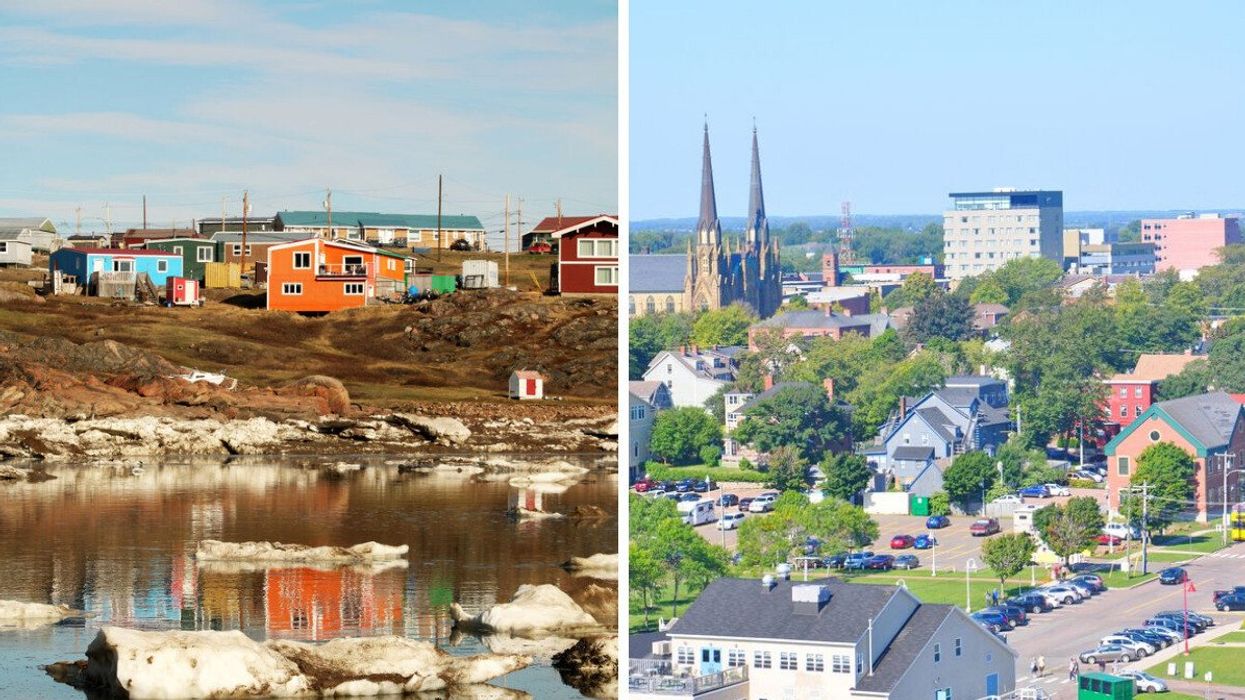The average salaries across Canada were revealed — Here's which spot earns the most in 2024
The gap between some provinces and territories is over $30K a year! 🫣

Here's how much the average Canadian worker makes in each province and territory in 2024.
Ever wonder which parts of Canada are bringing home the biggest paycheques? New data reveals the average salaries across the country right now — and the gap between the top and bottom earners might surprise you.
With inflation still a hot topic in Canada, knowing where your province stands can help you assess whether your earnings are keeping pace or falling behind. Between rent, groceries and even those sneaky subscription services, the rising cost of living is making salary comparisons more relevant than ever as some Canadians consider moving across the country for better opportunities.
According to the latest data from Statistics Canada, the average weekly earnings for Canadians hit $1,280.28 in September 2024. That works out to about $66,575 annually — a 5.2% increase compared to the same time last year.
But the earnings picture varies significantly by province, with some regions out-earning others by a wide margin — up to $660 per week, or $34,324 a year, to be exact.
So, who's at the top? Here's a breakdown of average weekly wages (and their yearly equivalent) across Canada by province and territory:
- Nunavut: $1,751.75 ($91,091/year)
- Northwest Territories: $1,701.28 ($88,467/year)
- Yukon: $1,450.08 ($75,404/year)
- Alberta: $1,353.72 ($70,393/year)
- Ontario: $1,316.32 ($68,449/year)
- British Columbia: $1,286.83 ($66,915/year)
National average: $1,280.28 ($66,575/year) - Newfoundland and Labrador: $1,244.55 ($64,717/year)
- Saskatchewan: $1,229.70 ($63,944/year)
- Quebec: $1,228.15 ($63,864/year)
- Manitoba: $1,154.20 ($60,018/year)
- New Brunswick: $1,148.59 ($59,727/year)
- Nova Scotia: $1,128.25 ($58,669/year)
- Prince Edward Island: $1,091.68 ($56,767/year)
Nunavut leads the pack, reflecting its high cost of living and smaller population, which typically drives wages upward. Incidentally, the territory has the highest minimum wage in Canada, and it also saw the largest year-over-year growth with a 7.5% increase from September 2023.
Alberta also comes in strong — despite being tied for the lowest minimum wage in the country — thanks to its resource-rich economy driving high earnings. Meanwhile, the average salary in Ontario, which experienced a strong 6.0% year-over-year growth, benefits from a diverse industrial base that keeps wages above the national average.
On the flip side, P.E.I., despite having one of the lowest average wages in the country, saw a notable increase of 6.0% — tying with Ontario for second-highest growth. And Nova Scotia, another province with lower earnings, posted a respectable 4.2% rise.
At the lower end of the growth spectrum, New Brunswick saw only a 2.3% increase — the smallest in Canada — while Newfoundland and Labrador wasn't far ahead at 2.5%. These modest changes could leave workers in those regions feeling the pinch, although they were notably still above the inflation rate of 1.6%.
For those in Manitoba or the Maritimes, lower average salaries often go hand-in-hand with a more affordable cost of living. This means that while your paycheque might be smaller, your money could still stretch further compared to pricier provinces like Ontario or B.C.
While the numbers paint a broad picture, they're influenced by factors like employment composition and hours worked. And with inflation still a factor, it's worth keeping an eye on how real wages stack up against the cost of living in your region.
As salaries continue to shift, one thing is certain: Where you call home can make all the difference in the size of your paycheque — and how far it'll go.
AI tools may have been used to support the creation or distribution of this content; however, it has been carefully edited and fact-checked by a member of Narcity's Editorial team. For more information on our use of AI, please visit our Editorial Standards page.
